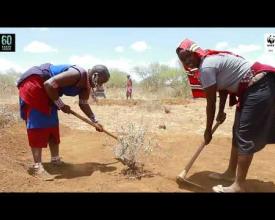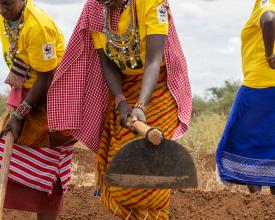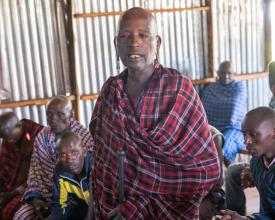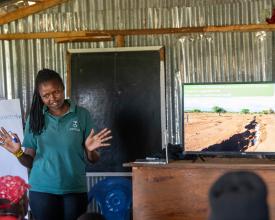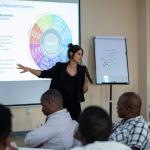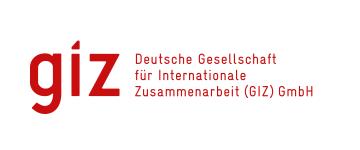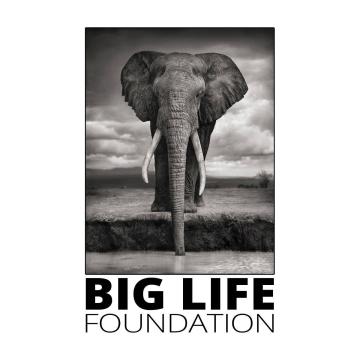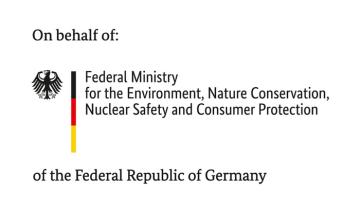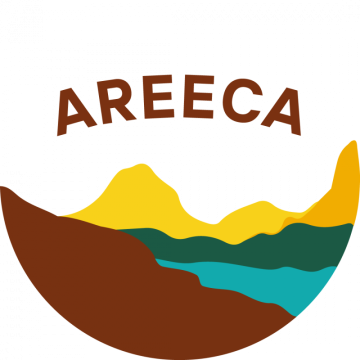
Implementing FLR in wildlife-coupled systems using Pastoralist Managed Natural Regeneration (PMNR) techniques
The East Kilimanjaro landscape in Kenya, covering Kajiado South sub-county (approximately 6,411 km²), encompasses diverse ecosystems, including rangelands suffering from severe degradation. To counter degradation, a forest landscape restoration (FLR) project, supported by WWF and other partners, involving community groups like ALOCA (Amboseli Land Owners Conservation Association) was undertaken. The project focuses on sustainable land use practices and restoration techniques to protect wildlife corridors, promote Maasai pastoral cultural practice, and create livelihood opportunities. Restoration methods include grazing management, tree rejuvenation, rainwater capture, and grass seed banking. Key actors include ALOCA (Amboseli Land Owners Association), Big Life Foundation, Justdiggit, and WWF.
Context
Challenges addressed
The AREECA project addresses environmental degradation of habitats and in particular in the rangelands it addresses overstocking, erosion, and climate variability. Socially, it enagages indigineous and especially Massai communities in sustainable land use and promotes cultural preservation, while economically, it aims to create new livelihoods through tourism and sustainable rangeland practices such as grass banking.
Location
Process
Summary of the process
The five building blocks are interconnected through a community-centered, adaptive approach that ensures each component builds on the previous one for sustainable outcomes. Identification of a trusted partner, ALOCA, serves as the foundation, leveraging local credibility to engage stakeholders. Community meetings (barazas) follow, facilitating open discussions that align landowner priorities with project goals, creating a participatory basis for further actions. This leads to the collaborative designation and demarcation of restoration sites, solidifying agreements on land use that prevent conflicts and enable targeted interventions. Raising awareness on restoration benefits, especially for women and youth, then broadens community engagement by integrating economic incentives and social empowerment into environmental goals. Finally, the monitoring and reporting framework allows local participants to track progress, adapt methods, and document successes. Together, these blocks create a self-reinforcing cycle of trust, transparency, and accountability, driving the project toward resilient ecological and social impact.
Building Blocks
Identification of a Suitable Community-Based Organization (ALOCA)
The selection of a trusted community-based organization was vital for engaging local communities in rangeland restoration. ALOCA (Amboseli Land Owners Conservation Association) was selected due to its dual focus on protecting wildlife corridors and promoting Maasai cultural heritage. Since its inception in 2008, ALOCA has worked closely with Maasai communities in Amboseli, creating sustainable land management plans and implementing indigenous grazing practices that reflect the Maasai’s seasonal land use patterns. ALOCA’s experience and credibility with local landowners positioned it as an ideal partner to lead restoration efforts, bridge communication between stakeholders, and champion the sustainable use of rangelands. The area area is central to wildlife conservation being a wildlife corridor.
Enabling factors
- Community Trust and Established Presence: ALOCA’s is owned and management by the Maasai communities thus providing foundation of trust, making it easier to mobilize support for new restoration initiatives.
- Stakeholder support: Initially supported by the African Wildlife Foundation and later backed by Big Life Foundation, ALOCA had stability and access to resources necessary for the project’s long-term success.
- Governance and Structure: With a 27-member management board and regular meetings, ALOCA provided a structured approach to decision-making, enabling swift responses to challenges and maintaining accountability.
Lesson learned
- Value of Established Partnerships: Collaborating with a trusted, community-based organization speeds up the process of gaining local support and trust, which are critical for sustainable project implementation.
- Community-Led Governance Enhances Project Ownership: Empowering local governance structures, such as ALOCA’s board, fosters a sense of community ownership, increasing the likelihood of project sustainability and willingness to scale up restoration efforts in the future.
- Importance of Financial Backing for Longevity: Securing consistent financial support (e.g., conservancy leases covered by Big Life Foundation) is essential to maintain ongoing commitments and ensure that community-based organizations can sustain their efforts long-term.
Organization of Community Meetings with Landowners (Local Barazas)
Community meetings, or barazas, served as the primary platform for engagement with landowners to discuss and align on proposed restoration interventions across 150 hectares of rangeland. These meetings were designed as participatory sessions where local Maasai landowners could voice their concerns, ask questions, and gain clarity on how the project would impact their land use. The barazas were instrumental in fostering transparent communication between project implementers and local stakeholders, allowing for an inclusive decision-making process that respected Maasai traditions and community dynamics.
Enabling factors
- Culturally Respectful Engagement Methods: Conducting barazas, a traditional community meeting format, allowed project leaders to approach discussions in a culturally appropriate manner.
- Representation and Inclusion: Including landowners and community representatives ensured that diverse perspectives were heard and that decisions reflected the community's priorities.
- Consistency and Follow-Up: Regular meetings provided a forum for ongoing dialogue and feedback, strengthening trust and adaptability to address any new concerns as the project progressed.
Lesson learned
- Transparency Builds Trust: Open and transparent discussions in barazas helped demystify the project’s goals, building trust and minimizing resistance among community members.
- Community Ownership Leads to Better Alignment: When landowners are actively involved in the decision-making process, they are more likely to support and participate in the project, ensuring that interventions align with their land use priorities.
- Iterative Feedback is Key: The regular nature of barazas provided continuous feedback, allowing the project to be responsive and adaptive to local needs and evolving challenges.
Agreement on Designating and Demarcating Restoration Sites
To ensure effective restoration, project leaders worked with the community to designate and physically demarcate specific areas for intervention. This included mapping the landscape to identify priority areas for rangeland restoration, addressing concerns over land ownership, and ensuring community consensus on where boundaries would be drawn. The collaborative designation process allowed for clear agreements on how the land would be used, while physical markers helped prevent future conflicts over land use and maintain restoration areas.
Enabling factors
- Community-Driven site identification and Planning: Engaging the community in mapping exercises fostered a shared understanding of the landscape and prioritized areas needing urgent intervention.
- Clear Boundary Markings: Physically marking boundaries (e.g., with fencing or natural markers) and border patrols by community scouts provided clear, visible indicators of designated restoration areas, reducing misunderstandings over land use.
- Consensus-Building Processes: Reaching community-wide agreements on site designation increased local commitment to respecting and protecting these areas.
Lesson learned
- Clear Boundaries Prevent Conflict: Physically marked boundaries reduce potential disputes over land use, ensuring that restoration areas remain protected.
- Local Input Enhances Relevance and Suitability: Community involvement in site selection increases relevance, as local knowledge helps identify areas that are both ecologically valuable and socially acceptable for restoration.
- Ownership Through Shared Decision-Making: Engaging the community in boundary designation fosters a sense of ownership, increasing commitment to maintaining and protecting these restoration sites.
Raising Awareness on Restoration and Livelihood Opportunities for Maasai Women and Youth
The project incorporated awareness-raising campaigns to educate the Maasai community about sustainable land use practices and the importance of ecosystem restoration. Specific opportunities, such as grass seed banking, were introduced to provide economic benefits, particularly for women and youth. These campaigns aimed to shift perceptions of rangeland management from merely subsistence grazing to a multi-benefit approach, combining ecological health with economic empowerment for marginalized community members. The learning by doing by the community helped to foster restoration skills among the members, thus making the community restoration champions on their own land.
Enabling factors
- Culturally Sensitive Communication: Using respected community leaders and existing networks allowed the campaign to resonate with local values and traditions.
- Direct Livelihood Benefits: Offering tangible economic incentives, such as grass seed banks, made the restoration efforts more appealing by showing immediate benefits.
- Supportive Partnerships for Implementation: WWF, Big Life Foundation, Justdiggit and ALOCA’s presence in awareness-raising efforts lent credibility and technical expertise, facilitating widespread acceptance
Lesson learned
- Economic Incentives Encourage Participation: Providing livelihood opportunities (e.g., through grass seed banks) increases community engagement and shows that restoration has both ecological and economic value.
- Awareness-Building is Essential for Behavioral Change: Restoration projects succeed when communities understand and value the benefits, highlighting the need for clear and consistent messaging.
- Empowering Women and Youth Drives Wider Impact: Targeting marginalized groups like women and youth not only enhances inclusivity but also expands the project’s reach and sustainability through diverse engagement. 90% of the restoration work was undertaken by women and youth.
Resources
Monitoring and Reporting on Restoration Progress
A structured monitoring and reporting framework was established to track the progress of each restoration method and assess outcomes. This framework involved regular data collection and reporting by trained community members, who were assigned specific tasks to ensure that the project’s ecological and social goals were being met. By monitoring the effectiveness of each intervention (e.g., soil erosion control, vegetation growth), the project could adapt techniques as needed and document best practices for future expansion.
Enabling factors
- Community Training and Capacity Building: Training local residents in monitoring techniques empowered the community to take responsibility for the project’s success.
- Regular Data Collection and Reporting: Consistent data collection provided real-time insights, allowing for timely adjustments to improve restoration outcomes.
- Collaborative Evaluation Processes: Involving the community in evaluation built transparency, ensuring that monitoring results were shared and understood by all stakeholders.
Lesson learned
Building Knowledge and capacities is key for understanding and ownership!
Impacts
The project restored 2,273ha of degraded rangelands, securing wildlife corridors by improving the habitat condition and supporting Maasai livestock based livelihoods through sustainable practices like grass seed banking. By protecting key ecosystems, the project positively impacts biodiversity, promotes economic benefits through tourism, and fosters social resilience within Maasai communities. Specific impacts include reducing soil erosion, promoting indigenous knowledge in land management, and supporting sustainable rangeland management to benefit both people and wildlife.
Beneficiaries
Maasai community members, including women and youth, benefit from improved land use practices, livelihood opportunities, and environmental restoration that protects their pastoral way of life and the wildlife, which is basis for ecotourism in the area.

